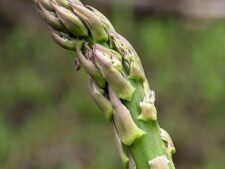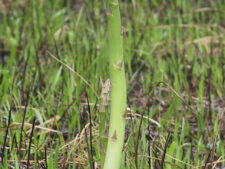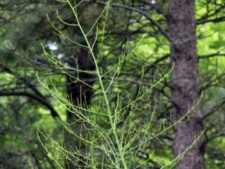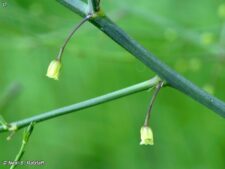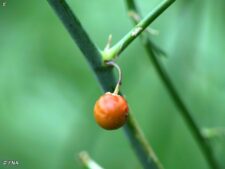
WILD ASPARAGUS
Asparagus officinalis
LILY FAMILY (Liliaceae)
 Identification
Identification
- Green asparagus shoots in early May - Flowering later in May and June
- Rare in open woodlands, woodland edges, fields at FF and NW
- Spindly, leafless plant with many fine needle-like branches
- Greenish-white bell-shaped flowers
- Round green berries turning orange as they mature
This naturalized perennial was introduced from Europe. At first the typical Asparagus stalk emerges (B,C). Later the smooth stems and finely dissected leaf-like branches form a bushy plant, up to 6 feet tall (D). The true leaves are reduced to pointed, triangular scales (C). The tiny creamy to greenish-white, bell-shaped flowers are found in pairs, their stalks arising at the junction of the main stem and its side branches (E). The fruit is a green berry which turns orange in July (A,F).
Occurs in woodland margins, open disturbed areas, roadsides and fields. Although fairly common in eastern Nebraska, this plant seems to be quite rare at Fontenelle Forest where the only recent record is of a single plant on Walking Club Trail. The same is true for Neale Woods where only a few plants occur in Jonas Prairie.
Asparagus has been long been cultivated for its tasty, edible early spring shoots. It was likely introduced to North America from France as early as the 1600’s and was present in Thomas Jefferson’s garden. Asparagus soon escaped from cultivation, and its Wild Asparagus descendants are now found scattered across most of the United States.
The content of NatureSearch is provided by dedicated volunteer Naturalists of Fontenelle Forest who strive to provide the most accurate information available. Contributors of the images retain their copyrights. The point of contact for this page is: Roland Barth.

